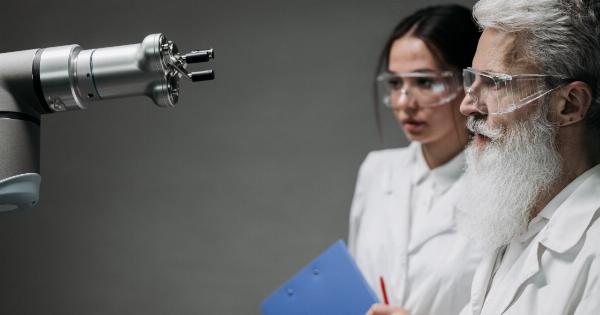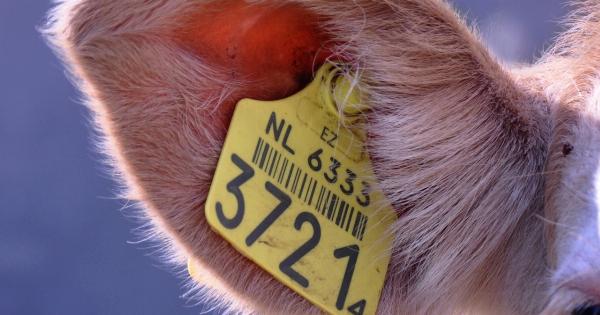Measles, a highly contagious viral infection, has been a major public health concern for centuries. It spreads through respiratory droplets and can cause severe complications, including pneumonia, encephalitis, and even death.
Although highly effective vaccines are available, measles still poses a significant threat, especially in countries with low vaccination rates. Rapid and accurate detection of measles cases is crucial for effective outbreak control and prevention of further spread.
Traditional Measles Detection Methods
Conventionally, laboratory diagnosis of measles involves detecting the presence of measles-specific IgM antibodies in a patient’s blood sample.
This method, known as enzyme immunoassay (EIA), requires specialized equipment and trained personnel, making it impractical for resource-limited settings and during outbreaks.
Another commonly used detection method is polymerase chain reaction (PCR), which amplifies measles viral RNA and detects its presence.
While PCR offers high sensitivity and specificity, it requires expensive equipment, advanced laboratory facilities, and skilled technicians.
The Need for Next-Generation Measles Detection
With the persistent threat of measles outbreaks, there is a pressing need for a rapid, cost-effective, and user-friendly measles detection method. Such a method would enable early diagnosis, facilitate prompt treatment, and aid in outbreak control.
Enter the currency-sized device – a next-generation solution that promises to revolutionize measles detection.
What is the Currency-Sized Device?
The currency-sized device, also known as a lab-on-a-chip, is a miniaturized diagnostic tool that integrates multiple laboratory functions onto a single microchip.
It can perform various analytical tasks, including sample preparation, nucleic acid amplification, and detection of target molecules.
This device utilizes microfluidic technology, where tiny amounts of fluids are manipulated within channels and chambers etched onto the microchip.
By leveraging the principles of microfluidics, the currency-sized device streamlines the diagnostic process, reduces the time required, and eliminates the need for extensive instrumentation.
How Does the Currency-Sized Device Work for Measles Detection?
The currency-sized device employs a combination of immunomagnetic separation and isothermal amplification techniques to detect measles-specific markers in patient samples.
First, a small volume of the patient’s blood or respiratory sample is introduced into the device.
Within the microfluidic channels, the targeted measles viral antigens or antibodies are selectively captured using magnetic beads coated with specific antibodies.
The captured measles-specific markers are then separated from the sample matrix using an external magnet, allowing for cleaner and more focused analysis.
Next, the isolated markers undergo isothermal amplification, enabling their rapid multiplication.
One of the widely used isothermal amplification techniques is loop-mediated isothermal amplification (LAMP), which offers high specificity and sensitivity.
The amplified measles markers are finally detected using various detection methods, such as colorimetric assays, fluorescence measurements, or electrochemical sensors.
The results are displayed on a digital interface, providing a clear indication of measles infection.
Advantages of the Currency-Sized Device
The currency-sized device offers several advantages over traditional measles detection methods:.
1. Portability and Point-of-Care Testing
Its compact size and battery-powered capability make it highly portable, allowing for convenient on-site testing. This is particularly beneficial in remote areas with limited access to healthcare facilities or during rapid response situations.
2. Rapid Results
The integration of sample preparation, amplification, and detection on a single microchip significantly reduces assay time. Measles infection can be detected within minutes, enabling immediate diagnosis and timely intervention.
3. Cost-Effectiveness
The currency-sized device eliminates the need for expensive laboratory infrastructure and reduces the reliance on specialized personnel. This leads to significant cost savings, making measles detection more accessible and affordable.
4. High Sensitivity and Specificity
The device’s ability to selectively capture and amplify measles-specific markers ensures high diagnostic accuracy. It minimizes false-positive and false-negative results, enabling reliable identification of infected individuals.
5. Scalability
As the currency-sized device can be mass-produced at a relatively low cost, it is highly scalable. This scalability enhances its applicability to large-scale screening programs and facilitates prompt response during measles outbreaks.
Current Challenges and Future Directions
While the currency-sized device holds immense potential for measles detection, there are a few challenges that need to be addressed:.
1. Validation and Regulatory Approval: Extensive validation studies are necessary to establish the device’s diagnostic performance and reliability. Obtaining regulatory approvals from relevant authorities is crucial for its widespread adoption.
2. Optimization and Standardization: Further optimization of the device’s design, assay protocols, and detection methods is essential to achieve consistent and reproducible results.
Standardization across different settings would ensure uniformity in diagnostic accuracy.
3. Affordability and Accessibility: While the currency-sized device is cost-effective compared to traditional methods, efforts should be made to ensure affordability, especially in low-resource settings where measles burden is high.
4. Integration with Digital Health Infrastructure: Incorporating the device’s output into existing digital health systems would enable seamless data management, real-time surveillance, and effective monitoring of measles outbreaks.
5. Multiplexed Detection: Expanding the device’s capabilities to simultaneously detect multiple pathogens, including other respiratory viruses or bacteria, would enhance its utility and aid in differential diagnosis.
Conclusion
The development of the currency-sized device for measles detection represents a significant leap forward in the field of diagnostic technology.
Its portability, rapid results, cost-effectiveness, and high accuracy make it an invaluable tool in combating measles outbreaks and achieving better public health outcomes.
As further advancements and refinements are made, the currency-sized device holds the potential to become a game-changer in not just measles detection but also in the diagnosis of various other infectious diseases.






























